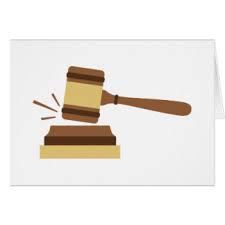How Much Lawsuit Funding is Available (the 10% Rule)
Lawsuit loan amounts depend on a variety of factors. In this post, we examine how much lawsuit funding is available and what variables routinely come into play when calculating lawsuit loan amounts.
How Much Lawsuit Funding Depends On:
Lawsuit loan amounts depend on a bunch of things. Consider the impact of the following:
Type of Case
How much lawsuit funding can depend on the type of lawsuit. For example, lawsuit loans on regular negligence lawsuits such as car accidents or slip and fall cases, can differ from medical or legal malpractice cases. How much lawsuit funding depends on how lawsuit funding companies assess risk. Thus, although reasons for different funding amounts based upon case type vary, an examination of risk by lawsuit funding underwriters is the determining factor. What risks are the underwriters determining? Please see the next section.
Strength of Liability

Lawsuit loan underwriting consists of analyzing the likelihood of success. For most cases, this is an examination of liability, damages and the ability of the defendant to pay the recovery. Without an adequate assessment of these three aspects of civil cases, there is no lawsuit business.
Liability then, is the first hurdle that must be overcome. Consider a car wreck where both parties say they had a green light. Because a jury might find for one party over the other, both sides must adjust their settlement expectations. Compare this scenario with one where one party is clearly at-fault. Under these circumstances, the only issue left is the extent of the damages.
Potential settlement value for the latter case should be higher with similar injuries and economic loss. Thus how much lawsuit funding is available to the injured plaintiff will also be higher.
Damages and How Much Lawsuit Funding
Personal injury damages is a complicated affair but will have a significant impact on how much lawsuit funding is available to certain plaintiffs. Remember, the “heavier” the case (the larger the potential settlement value), the more lawsuit funding is generally available. Cases with higher potential will have access to a larger amount of funds because lawsuit loan amounts are offered at a percentage of the potential value. More on this later in the post.
Amount of Coverage
Similar to damages above, the ability to pay any recovery is of paramount importance. A judgment against a defendant with no money is of no value to anyone. For this reason, available insurance coverage is a mandatory requirement in most lawsuit funding applications. In cases where coverage is limited, how much lawsuit funding will be lessened by the insurance limits.
Expected Duration
Once the lawsuit is formally started, opposing counsel appears as the two parties litigate the matter. The clock begins to run as both sides wait for the trial date.
Because lawsuit funding companies are concerned with the amount of time it takes for their capital to be returned, assessing what stage in the formal proceedings is also important when determining approval amounts. In certain instances a lawsuit lender might want a quick return of capital. In others, a longer duration will mean the money is earning for a longer period of time. Thus, an underwriter’s assessment of how much time is expected to elapse before the matter is resolved could affect the funding amount offered.
Choice of Counsel (How Much Lawsuit Funding)
Choice of counsel might also affect how much lawsuit funding is available for an applicant. Attorney resources can play a significant role is case value in some circumstances. Consider a solo practitioner who takes on a large corporation in a product liability lawsuit. With limited resources, the small firm might be inclined to “sell” a settlement offer to a client whereas a larger firm with more access to capital might be inclined to wait out a higher offer. For this reason, lawsuit funding underwriters weigh choice of counsel as part of their process.
Plaintiff’s Needs
When applying for an advance, plaintiffs are often asked how much lawsuit funding they need. Some simply reply with “max”. Others only ask for the small amount needed for some immediate financial obligation. Maximum settlement loan amounts are determined by an applicant’s request or limited by the determination of potential case value as applied to the 10% Rule described below.
If You Have Any Questions, Call 888-964-2224
WE ARE HERE TO HELP YOU!
The 10% Rule (The Magic Ratio)
The 10% rule is a general rule of thumb that limits lawsuit loan approval amounts to 10% of the subjective future settlement value of the case.
Potential settlement values are determined by weighing certain factors including those mentioned previously in this post. When lawsuit funding underwriters consider these factors, they then predict a likely settlement offer and amount. Based upon that prediction, a lawsuit funding company will offer up to 10% of that amount to the applicant.
The idea of the 10% ratio is to leave enough money in the case so the plaintiff will continue to pursue the matter. A case without a willing plaintiff is no case at all. And if there is no case, a lawsuit lender’s investment is worthless.
The 10% rule is not a strict rule however, as variables such as previous offers and case duration can increase how much lawsuit funding is available. It is not uncommon for the ratio to reach 20% or greater depending on the value of the case. Multi-million dollar settlement values will likely increase the ratio above the 10% rule in most cases.
Learn More
The best way to find out how much lawsuit funding is available is to give us a call. You will speak to a live person who will answer all of your questions. If you are considering lawsuit funding, do not hesitate to contact us. We are here to help and are at your service.
Thank you for your interest in Fair Rate Funding.




